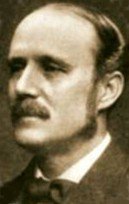Sir George Bielby (1851-1924)

George Beilby was a chemist by training and became manager of Oakbank Paraffin Oil Works around 1877. In 1883, when sulphate of ammonia became important, Beilby, together with William Young, designed the Young & Beilby retort in order to maximise production of this valuable substance. By 1889, 50% of the 5,000 retorts in Scotland were of the Young & Beilby type. He later designed an ammonia still and, after leaving the shale oil industry, became a major authority on fuel economy and smoke prevention.
Obituary
Noted Scottish Scientist – The Late Sir George Beilby
The death took place in London on Thursday night of Sir George Thomas Beilby, one of the leading scientists of his day, and chairman for many years of the Royal Technical College in Glasgow. He had been living in London for some time, and during the past few months he had suffered from ill-health.
Born in Edinburgh in 1850, where his father, after whom he was named, was a well-known medical practitioner, Sir George Beilby was educated at local schools, and subsequently matriculated at Edinburgh University. His scientific genius became apparent early in life, and after settling in Glasgow he speedily achieved distinction in the realms of research. Since the year 1880 his name had been constantly before the public as the discoverer and patentee of processes which, in many instances, have had revolutionary effects in various departments of industry. One of his earliest inventions was the famous Young and Beilby retort, by means of which the mineral oil industry of Scotland was raised from a comparatively struggling position to one which enabled it to compete profitably with its foreign rivals. At the time of his death he was chairman of directors of the Cassel Cyanide Company (Ltd.) Sir George Beilby was indefatigable in chemical and microscopical research. He also made a special study of the problems of fuel economy and smoke prevention in connection with the coal consumption of Great Britain, and on that subject he presented a valuable report to the Royal Commission on Coal Supplies in 1903.
Sir George Beilby – he was created a knight in 1916 – held many distinctions in the department of science, including the Fellowship of the Royal Society, the Institution of Chemistry, and the Institute of Civil Engineers. He was president of the Society of Chemical Industry in 1899, vice-president of the Institute of Chemistry from 1903 to 1906, and in 1905 he was president of the Chemical Section of the British Association at the South African meeting of that body, while in 1912 he was a member of the Royal Commission on fuel and engines for the Navy.
He succeeded the late Sir William R. Copland in 1907 as chairman of Governors of the Royal Technical College in Glasgow, and had for many years been identified with a number of industrial concerns, chiefly connected with chemistry. The honorary degree of LL.D. was conferred upon him by the Senate of Glasgow University in 1909. During the period of the war, Sir George Beilby rendered valuable services – advisory and practical – to the Government in his capacity as an expert chemist.
Sir George Beilby, whose home was at 11 University Gardens, Glasgow, is survived by Lady Beilby, one son and one daughter. His son, Mr Hubert N. Beilby, is Technical Director of the Cassel Cyanide Company, while his daughter is the wife of Professor Soddy, whose name is well known in connection with research and experiment with radium and other substances.
The Scotsman, Saturday 2nd August 1924
- Age 20, Born Edinburgh
- Chemist,
- Falcon Cottage, Newington Living with parent – George Bielby MD age 59
- Age 30, born Edinburgh
- Chemist,
- Manager of Oil Works Born Edinburgh
- 2 Randolph Place, Edinburgh
- Wife Emma (23)
- Age 40, born Edinburgh
- Chemist & Chemical Engineer
- “St Kitts” Colinton
- Wife Emma (33)
1871 census
1881 census
1891 census
Died Hampstead 1924